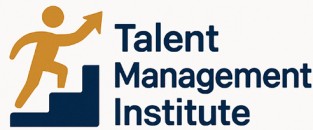
Understanding the Landscape of IT Staffing
Exploring the IT Staffing Environment
The realm of IT staffing is a dynamic landscape, with organizations constantly adapting to evolving compliance requirements. To adequately navigate this space, it's essential to understand the overarching themes and challenges that have become integral in this industry. IT staffing encompasses a broad spectrum of roles and responsibilities, guided by regulations and practices that ensure both compliance and operational efficiency. Employers within this sector are tasked with maintaining transparency, adhering to employment laws, and incorporating best practices in their recruitment processes. One of the key challenges in IT staffing is the need to balance legal requirements and effective staffing. Compliance issues such as pay transparency, anti-discrimination measures, and data privacy obligations are at the forefront. Organizations must develop robust staffing policies that align with state and local labor laws, ensuring that job postings and recruitment efforts are legally sound. In recent years, the rise of remote work has further complicated compliance strategies. Employers must adapt to this shift by ensuring that both local and global employment laws are respected when employing remote staff. This involves not only adhering to traditional staffing compliance requirements but also addressing the nuances of remote employment. To effectively tackle these challenges, companies are increasingly utilizing technology. Tools like artificial intelligence and applicant tracking systems (ATS) have become indispensable for managing recruitment compliance and maintaining employment records. These systems ensure that organizations can swiftly adapt to new compliance demands, providing a structured framework for the future of IT staffing. For those seeking further insight into the technological aspects of IT staffing, understanding how applicant tracking systems maintain digital records of candidates is critical. This aspect not only streamlines recruitment but also enhances compliance strategies significantly. Embracing these dynamics allows IT employers to craft an adaptable approach to staffing, keeping them ahead in a competitive market while ensuring compliance at every step.Key Compliance Requirements in IT Staffing
Compliance Expectations and Regulatory Frameworks
Understanding the intricate web of compliance expectations is crucial for organizations in the IT staffing industry. With ever-evolving employment laws and regulations, employers must remain vigilant to avoid potential compliance issues. Anti-discrimination and labor laws are at the forefront, ensuring equity and fairness in employment practices.Key Regulatory Compliance Areas
Several key compliance requirements are pivotal in the IT staffing realm:- Pay Transparency: Organizations must adhere to pay transparency laws, ensuring clear communication of compensation structures and fair salaries for all employees.
- Data Privacy: Safeguarding sensitive employee data is fundamental, with regulations like GDPR imposing stringent data protection measures.
- Anti-Discrimination Laws: Compliance with state and local anti-discrimination laws ensures fair treatment in job postings, hiring, and recruitment processes.
- Paid Leave Regulations: Offering paid leave in accordance with state legislation is crucial, reflecting best practices in employee welfare.
Ensuring Compliance through Effective Policies
For organizations, establishing robust staffing policies is essential to ensure compliance. This involves developing a framework that addresses key compliance areas such as pay transparency, anti-discrimination, and data privacy. These policies must be regularly reviewed and updated to align with state and local employment regulations.Tackling Compliance Challenges
Navigating compliance challenges requires a proactive approach. Organizations must implement rigorous compliance checks and invest in technology solutions like artificial intelligence for efficient tracking and monitoring of compliance requirements. This not only mitigates risks but also positions employers as transparent and ethical leaders in the staffing industry. Explore more on the regulatory frameworks influencing staffing compliance at Enhancing Marketing and Sales Forecasting through Strategic Spend Management to gain insights into strategic business operations.Strategies for Building a Compliant IT Workforce
Strategies to Foster Compliance in IT Talent Acquisition
In the competitive IT staffing landscape, building a workforce that aligns with compliance standards is not just about adhering to laws but creating a culture that values transparency and ethical practices. Here are some effective strategies organizations can implement to ensure compliance in their IT recruitment efforts:- Develop Clear Employment Policies: Establish comprehensive policies that outline your organization's commitment to compliance. These policies should address key areas such as anti-discrimination, pay transparency, and data privacy, ensuring both employers and employees are aware of their rights and responsibilities.
- Implement Rigorous Recruitment Processes: Tailor your recruitment processes to meet legal requirements and minimize compliance issues. This involves ensuring job postings are free from discriminatory language and align with state and local employment laws. Leveraging technology, like artificial intelligence, can streamline these processes while maintaining adherence to current regulations.
- Embrace Remote Work Policies: With the shift towards remote work, it's crucial to update and comply with labor laws specific to remote employment. This includes understanding jurisdictional regulations and adapting your policies to ensure compliance across different state lines.
- Foster a Culture of Transparency and Communication: Encourage open dialogue about compliance requirements and legal obligations within the workforce. Employers should ensure that employees are aware of human resource practices related to paid leave, anti-discrimination laws, and staffing compliance.
- Stay Informed on Compliance Requirements: Keeping abreast of changes in labor and employment laws is vital. Organizations should regularly review their compliance practices and update them in line with evolving regulations, ensuring they remain ahead of potential compliance challenges.
- Invest in Training and Continuous Improvement: Regular staff training sessions focused on compliance issues should be part of the organization's talent management strategy. This not only helps employees understand legal and compliance requirements but also instills practices that minimize risks and protect both the organization and its workforce.
The Role of Technology in IT Staffing Compliance
Technological Innovation Enhancing Staffing Compliance
In the current digital era, technology plays a pivotal role in ensuring staffing compliance. Employers and organizations are leveraging technology to streamline processes, enhance transparency, and meet the complex requirements of employment laws. The integration of Artificial Intelligence (AI) in the recruitment process is increasingly prevalent, aiding in reducing compliance challenges related to discrimination and data privacy.- AI in Recruitment: AI tools are being employed to avoid the pitfalls of bias in hiring, which is a key aspect of anti-discrimination laws. By utilizing AI-driven analysis of job postings and candidate interactions, employers can ensure more objective and compliant recruitment practices.
- Data Management & Privacy: Managing employee data in line with state and local regulations has never been more critical. Implementing robust data privacy protocols helps organizations avoid legal complications. AI and other technologies can automate data handling and ensure adherence to privacy regulations.
- Automation for Compliance: Automated systems can help track and document leave policies, pay transparency, and other employment law requirements. This not only aids in adhering to legal standards but also allows for efficient handling of day-to-day staffing operations.
Training and Development for Compliance
Empowering through Education for Compliance Mastery
To tackle recruitment compliance and other challenges in IT staffing, organizations must embrace robust training and development programs. These initiatives can serve as a strategic tool to navigate complex employment laws and uphold the principles of transparency, anti-discrimination, and privacy. Training programs should address:- Understanding Employment Law: Workshops and sessions focusing on state and local labor laws can empower employees and employers with the knowledge to ensure compliance in day-to-day operations.
- Data Privacy Compliance: Given the increasing reliance on technology in staffing and the associated data, training should cover data protection regulations and practices to maintain confidentiality and integrity.
- Equal Employment and Anti-Discrimination Laws: Regular updates about key legal requirements can foster an inclusive culture by minimizing the risks of staffing compliance issues related to discrimination laws.
- Pay Transparency and Wage Laws: Education about pay practices and related employment laws is crucial for staffing processes that align with both compliance requirements and ethical standards.
- Remote Work Policies: As remote work gains prominence, employees should be trained on the latest legal and compliance challenges specific to non-traditional work settings.
Future Trends in IT Staffing and Compliance
Emerging Trends Shaping Future IT Staffing and Compliance
The landscape of IT staffing and compliance is continuously evolving, influenced by technological advancements and changing workforce dynamics. Employers must stay ahead by adapting to these shifts while ensuring that their recruitment compliance aligns with current employment laws.
One key trend is the rise of remote work. Organizations need to adopt flexible staffing practices that accommodate remote employees while adhering to labor laws across different states. Complying with data privacy regulations becomes crucial as remote work can expose employees’ personal data to potential breaches. For employers ensure compliance, staying informed about state and local regulations is essential.
Another significant trend is the integration of artificial intelligence in staffing processes. AI can streamline recruitment by efficiently screening job postings, yet it must be used responsibly to avoid compliance challenges. Employers need to address potential anti-discrimination issues by ensuring that AI tools are free from biases. Transparency in how these tools operate is vital to maintaining trust and meeting legal requirements.
Pay transparency is also gaining traction. As labor markets become more competitive, and employees seek greater clarity around pay, it's important for staffing industry leaders to develop clear policies that align with pay transparency mandates. This can help reduce compliance issues and foster a culture of trust within organizations.
Finally, creating comprehensive employment policies that encompass paid leave and other employee benefits is crucial for building a compliant IT workforce. As seen previously in training and development efforts, prioritizing understanding and adherence to compliance requirements ensures employees are well-informed and equipped to navigate the complexities of future workplace challenges.












